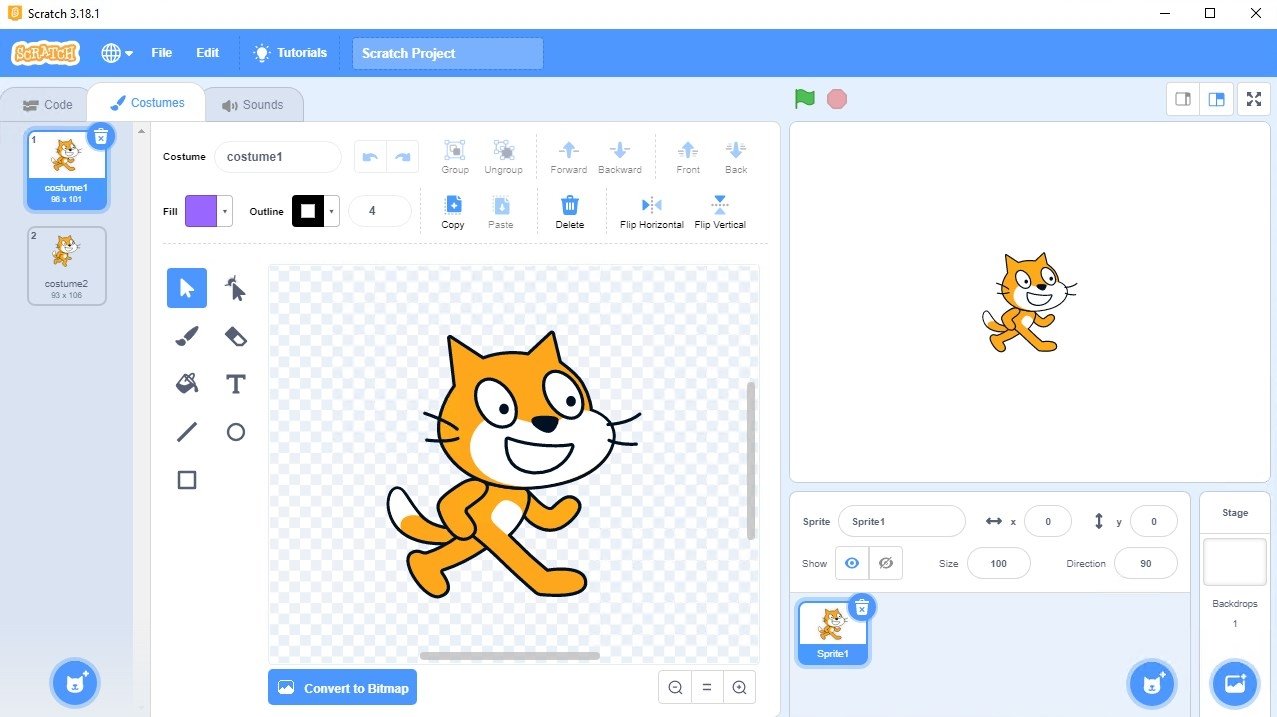Finding a fresh scratch on your beloved car can, it's almost, feel like a punch to the gut. That smooth, shiny surface suddenly has an unwelcome mark, and you might think to yourself, "Oh, no, is that going to cost a fortune?" It is, too, a very common sight on roads everywhere, from minor scrapes in parking lots to unexpected marks from unknown sources. You might feel a wave of frustration, wondering just what you can do about it.
The good news, however, is that many car scratches are not the end of the world for your vehicle's look or its paint. You see, there are, in a way, different kinds of scratches, and knowing what you're dealing with makes all the difference. It's not always a big, costly repair job, and sometimes, you can even sort it out right at home.
This guide will walk you through the various kinds of marks your car might pick up and, basically, show you how to approach fixing them. We'll look at what you can handle yourself and when it's best to get some expert help. Our aim is to give you a clear path for any scratch car repair needs you might have, so you can get your vehicle looking good again.
Table of Contents
- Different Types of Car Scratches
- DIY Scratch Repair: What You Can Do
- When to Call the Professionals for Scratch Car Repair
- Maintaining Your Car's Finish
- Frequently Asked Questions About Scratch Car Repair
Different Types of Car Scratches
Before you even think about fixing a scratch, it's pretty important to know what kind of scratch you're dealing with. Not all marks on your car's paint are the same, and what works for one might not work for another. This knowledge, you know, helps you pick the right way to fix it.
Surface Scratches
Surface scratches are, essentially, the most common and often the easiest to deal with. These marks usually only affect the clear coat, which is the very top layer of your car's paint. You might see them as fine lines that seem to disappear when the car is wet, but reappear when it dries. They don't go through the color layer. These can happen from, say, a branch brushing against the car, or maybe just from regular washing and drying with the wrong kind of cloth. A bit of polish or a special repair pen can often make these vanish.
Deep Scratches
Now, deep scratches are, quite literally, a different story. These marks go past the clear coat and into the colored paint layer, or sometimes even through to the primer or the metal below. You can usually feel a deep scratch with your fingernail; it will catch in the groove. These types of scratches are, you know, more serious because they expose the lower layers, which can lead to rust if left alone. Fixing these often involves more than just a quick polish; it might need touch-up paint or even professional attention.
Paint Transfer and Swirl Marks
Paint transfer is when paint from another object, like a pole or another car, rubs off onto your car's surface. It might look like a scratch, but it's often just a layer of foreign paint sitting on top of your car's finish. This can sometimes be rubbed away with a bit of effort and the right cleaning product. Swirl marks, on the other hand, are a collection of very fine, circular scratches that show up when light hits the car just right. They're typically caused by improper washing methods or automatic car washes. They usually affect only the clear coat and can make your car's paint look dull or hazy.
Key Marks
A key mark, or someone keying your car, is a particularly frustrating kind of scratch. These are, basically, almost always deep scratches, as they are intentionally made with a sharp object. They cut through the clear coat and paint, often reaching the primer or even the metal. As a matter of fact, the text mentions a "record scratch" feeling when you find someone keyed your car. Because of their depth and often their length, these marks usually need more significant repair, possibly involving wet sanding and touch-up paint, or even a trip to a body shop.
DIY Scratch Repair: What You Can Do
For those smaller, less severe marks, you might be able to handle the scratch car repair yourself. It's a satisfying feeling, you know, to bring your car's finish back to life with your own hands. Just remember to work carefully and methodically.
Gathering Your Tools
Before you start, make sure you have the right stuff. For light marks, you might need a good car polish, a microfiber towel, and maybe a scratch repair pen. For something a little deeper, you'll want a touch-up paint kit that matches your car's color exactly. Some kits, like Meguiar's scratch eraser kit, include things like a drill pad for effective application and special towels. You might also need some rubbing alcohol to clean the area, and perhaps some fine-grit sandpaper if you're dealing with a deeper mark that needs a bit of smoothing.
For Light Scratches: Clear Coat Solutions
If your scratch is just in the clear coat, a scratch repair pen is, honestly, a good choice. These pens contain a clear resin that fills in the tiny grooves, making the scratch much less noticeable. You just apply the pen's solution to the mark, let it dry, and then buff it gently. For broader, lighter surface marks or swirl marks, a good quality polish or a scratch eraser kit can work wonders. These products contain very fine abrasives that gently remove a tiny layer of the clear coat, leveling out the surface and making the marks disappear. You apply the product with a soft cloth or a special pad, then buff it until the shine returns.
Addressing Deeper Scratches: Touch-Up Paint
When the scratch goes into or past the paint layer, you'll likely need a touch-up paint kit. These kits usually come with paint that matches your car's original color. First, you need to clean the area really well. Then, you carefully apply the touch-up paint directly into the scratch. It's often best to apply several thin layers rather than one thick one, allowing each layer to dry completely. Some kits might also include a clear coat to apply over the paint for added protection and shine. For very deep marks, like those from a key, you might even need to do a bit of wet sanding with very fine sandpaper before applying the paint, to make the surface smooth. This helps the new paint blend in better.
When to Call the Professionals for Scratch Car Repair
While many minor issues can be sorted at home, there are times when professional scratch car repair is, frankly, the best way to go. Sometimes, the damage is just too much for a DIY fix, or you might not have the specialized tools or skills needed.
Body Shops and Specialized Services
If a scratch is very deep, goes into the metal, or covers a large area, a body shop is often your best bet. They have the right equipment and the experience to handle more significant damage, including repainting and refinishing sections of your car. There are also specialized "smart repair" services, like those offered by Revive!, which focus on smaller, localized repairs such as bumper fixes, dent removal, and car scratch repairs. These services can, in some respects, be a more affordable option than traditional body shops for certain types of damage, as they often complete repairs in just a few hours. Ziebart also offers a scratch removal process that targets different types of damage, providing another professional option.
Benefits of Professional Help
Choosing a professional for scratch car repair means you're getting someone with a lot of practice and the right tools. They can perfectly match your car's paint, ensure the repair is smooth and even, and make sure the scratch doesn't lead to bigger problems like rust down the line. They have the knowledge to assess the damage accurately and apply the most effective repair methods, whether it's wet sanding, machine polishing, or a complete panel repaint. This can save you time and effort, and, usually, result in a finish that looks like the scratch was never there.
Maintaining Your Car's Finish
Once you've taken care of those scratches, keeping your car's finish looking good is, honestly, an ongoing effort. Regular washing with the right products and methods can help prevent new swirl marks. Applying a good quality wax or sealant can add a layer of protection to your clear coat, making it more resistant to minor scrapes and environmental damage. Being mindful in parking lots, avoiding tight spaces, and driving carefully can also reduce the chances of getting new marks. It's all about, you know, protecting that beautiful surface you worked so hard to restore.
Frequently Asked Questions About Scratch Car Repair
Here are some common questions people ask about fixing car scratches:
Can I fix a deep scratch myself?
You can, in a way, often improve the look of a deep scratch yourself using touch-up paint and careful application. However, if the scratch is very deep, goes into the metal, or if you want a perfect, factory-like finish, it's generally best to have a professional body shop or specialized repair service handle it. They have the tools and skill for a truly seamless repair.
What's the difference between a scratch repair pen and a touch-up kit?
A scratch repair pen is, basically, for very light marks that only affect the clear coat. It fills the scratch with a clear resin. A touch-up kit, on the other hand, contains paint that matches your car's color and is meant for deeper scratches that have gone through the clear coat and into the paint layer. The kit helps restore the actual color to the damaged area.
When should I take my car to a professional for scratch repair?
You should consider professional help if the scratch is very deep (into the primer or metal), covers a large area, or if you're dealing with multiple scratches. Also, if you're not comfortable doing the repair yourself or want a perfect, undetectable fix, a professional body shop or a smart repair service is the way to go. They can, apparently, offer a finish that is hard to achieve at home.



Detail Author:
- Name : Harry Bruen MD
- Username : ankunding.mylene
- Email : myles.turcotte@cronin.net
- Birthdate : 1977-05-15
- Address : 56340 Hilpert Mission Suite 092 Nitzschemouth, MO 70235-6380
- Phone : +1.283.651.1624
- Company : Doyle-Casper
- Job : Coating Machine Operator
- Bio : Non quos placeat ipsum dolorem exercitationem provident. Delectus enim aut aut porro qui accusantium est ex. Et quo amet numquam neque fuga facere sunt. Sit necessitatibus non inventore doloribus.
Socials
tiktok:
- url : https://tiktok.com/@sterling.walker
- username : sterling.walker
- bio : Iusto cum in non quisquam. Provident excepturi dolorem consequatur.
- followers : 1319
- following : 1899
facebook:
- url : https://facebook.com/sterling5077
- username : sterling5077
- bio : Culpa hic aliquam id consequuntur. Aut illo quasi recusandae vel quia est qui.
- followers : 6802
- following : 1516
twitter:
- url : https://twitter.com/sterlingwalker
- username : sterlingwalker
- bio : Optio corporis placeat consectetur labore non laudantium aut. Sed expedita tempora minus ad omnis. Deleniti est vel excepturi autem enim voluptatem eos.
- followers : 4371
- following : 753